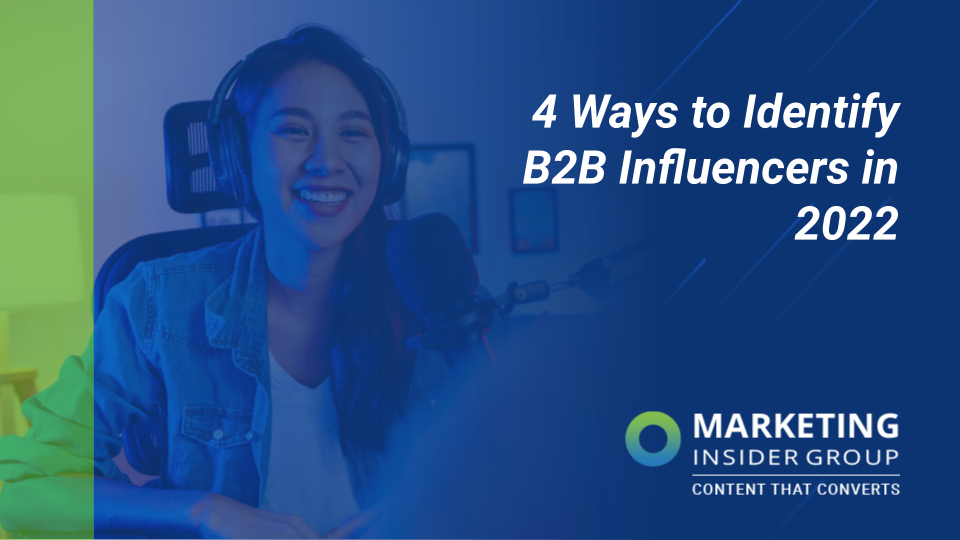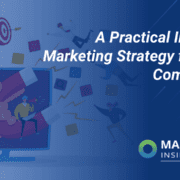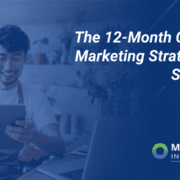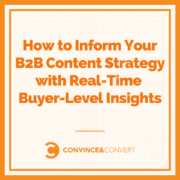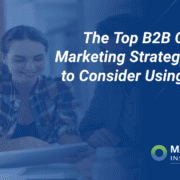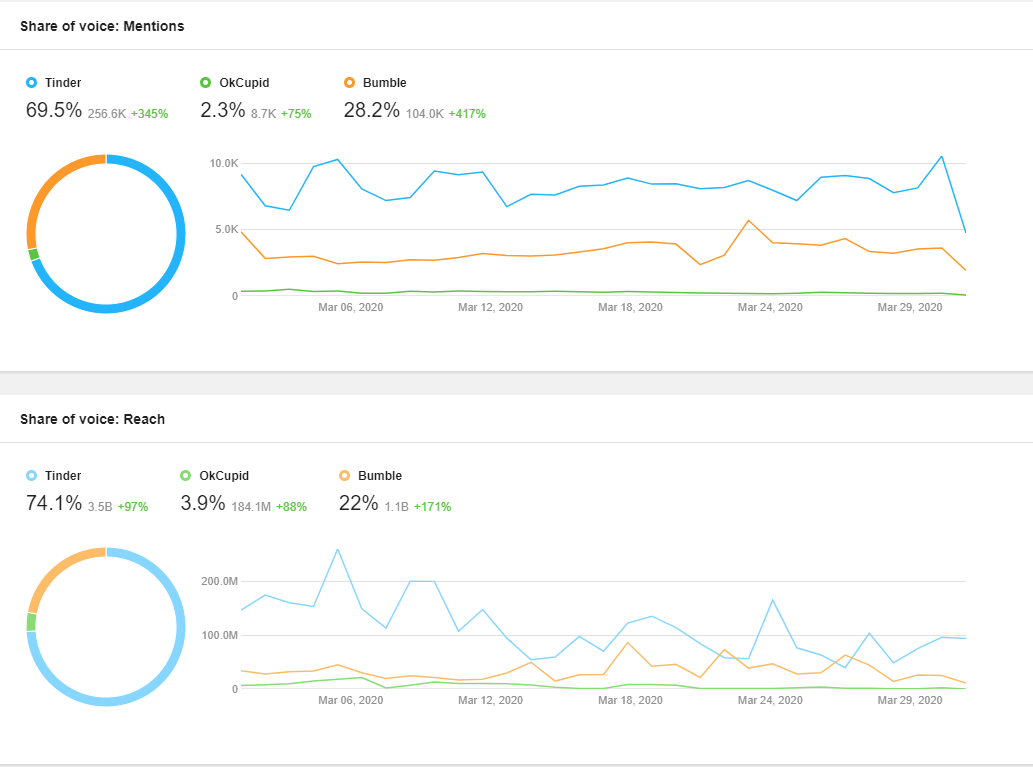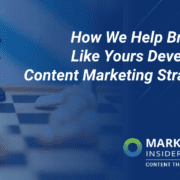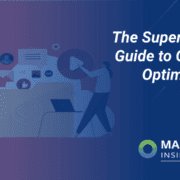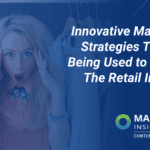4 Ways to Identify B2B Influencers in 2022
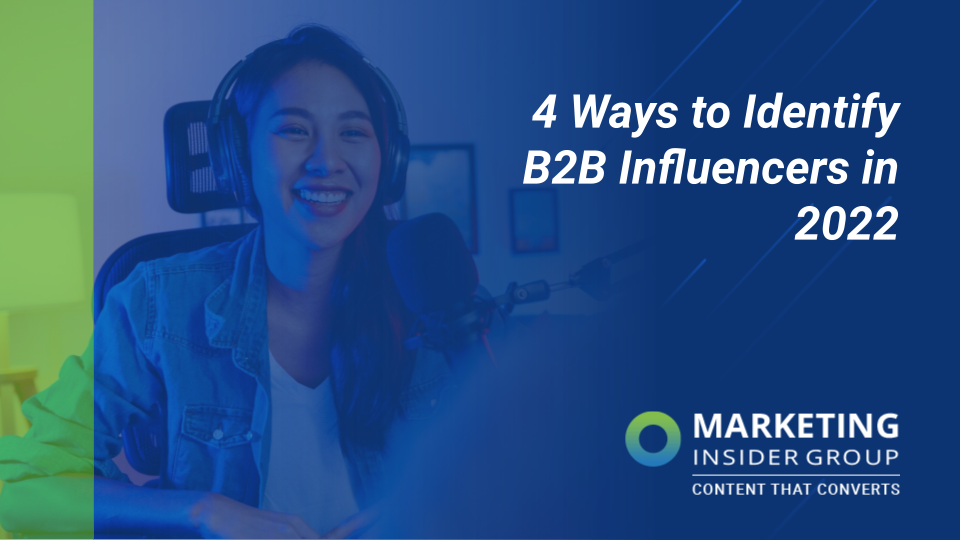
B2B influencer marketing is a game-changer for enterprise brands. By partnering with influential thought leaders in your industry, you can reach new audiences, build trust and credibility with current customers and prospects, and drive sales.
Planning and executing a B2B influencer marketing strategy is challenging. There are several moving pieces that require attention and focus. But the most critical factor is how you identify the influencers you decide to collaborate with. If you get this part wrong, your entire program can get derailed with poor performance. In addition, you’ll need individuals who are respected and well-connected in your industry and who align with your company’s values.
There are several ways to identify influencers. Unfortunately, spending 15 minutes searching Google isn’t one of them. Over the years, I have experimented with identifying influencers by topic, channel, role, and audience.
Topical Based-Influencers
Topical-based influencers are experts in their field. Their posts are crafted to educate and inform their audiences about the latest news, developments, or trends within their topic of interest. Industry influencers are similar, but there are some differences. A topical influencer is more specialized. They might be futurists, thought leaders or innovators focused on helping others stay ahead of the curve. Over the last year, I have noticed a rise in metaverse influencers across Twitter and LinkedIn. Many of them talk about the metaverse for business and how brands can tap into this new technology.
Industry influencers focus on macro-level topics like healthcare, finance, or manufacturing. It doesn’t mean they won’t create content or talk about how the metaverse can be used by pharma or within a factory. But they are talking about other topics too.
Topical influencers tend to have a more engaged and passionate following of users who are deeply interested in the subject matter. For companies or brands looking to promote their products or services within a specific industry, partnering with a topical-based influencer can be an extremely effective marketing strategy.
Channel-Based Influencers
Channel-based influencers specialize in building an audience and authority within a specific platform like TikTok. They have a solid understanding of the platforms, capabilities, and algorithms. As social media platforms become less relevant, they will become early adopters of up-and-coming apps and networks. They will have already tested and tried new platforms, so their followers don’t have to. This is valuable because it helps save time for people who want to be on the cutting edge but don’t have the time or ability to do all the research.
While it’s smart to partner and collaborates with channel influencers, you will find that their influence is too narrow to impact the larger digital ecosystem. In addition, their focus is on one platform instead of many. So if you’re looking for an influencer to help you reach a new audience or promote your brand across multiple channels, a channel-based influencer might not be the best fit.
Functional-Based Influencers
Functional-based influencers are respected individuals within their field or industry, and they often have a large following across many social platforms. They use their platform to educate, inform, and entertain their audience. Many of them are also thought leaders who are respected for their knowledge and experience.
There are several different types of role-based influencers, including:
- CEOs & Founders
- Industry Analysts
- Influential technologists (engineers, developers, data scientists)
Functional-based influencers can be very effective because they are subject matter experts, and many have cross-channel influence. They can help you reach new audiences and promote your brand across multiple channels.
There is another way to identify influencers, but it starts with building a target audience first.
Using Audience Data to Find Influencers
One of the benefits of working in B2B marketing is that it’s not too difficult to find your audience on social media. Most B2B decision makers and technologists self-identify as such in their bios. This makes it easier to find and connect with them. Additionally, most of them are already talking about their specific pain points and needs online.
For example, let’s say you build an audience of 4.5K IT decision-makers (ITDMs). There are two ways to identify who influences this specific audience-using affinity and conversational data.
- Affinity data calculates the percentage of an audience that follows a particular account on social media. For example, if 30% of an audience follows a specific individual, that account has a high affinity with your audience.
- Conversational data looks at the interactions (likes, comments, shares) between an account and your audience. This helps you identify which accounts are already talking to your audience and engaging with them in a meaningful way.
Let’s assume that 55% of the audience follows a certain influencer. This influencer was a 20-year veteran at IBM and even served as the CIO during his tenure. But when you explore the conversational data of the ITDMs, only a very small percentage engage with him.
On the other hand, 13% of the audience follow another influencer who’s been a DevOps engineer for about 10+years. So even though the audience affinity is low, the engagement rate from the audience is off the charts. This is because she is always talking about the latest trends in the IT industry, sharing her point of view on new tech and how they can be applied to solve specific problems.
As you can see, it’s essential to look at both affinity and conversational data when identifying influencers. In this example, the DevOps engineer has a lower affinity but more influence over the ITDM audience.
Final Thoughts
As we move into 2022, the digital marketing landscape will continue to change and evolve. And as a result, the way we identify and connect with influencers will need to change. If you want to connect with influencers successfully, it’s essential to understand the different types and the best practices to identify them.
When it comes to audience data and research, you need to keep a few key things in mind. First, research is vital to determine which type of influencer would best fit your business. Second, research will also help you choose the ideal platform for your influencer marketing strategy. And lastly, research will help you understand how to measure the success of your campaign so that you can optimize and improve your results over time.
No matter what, always remember that the most important thing is to focus on quality over quantity. It’s better to have a smaller group of highly influential people promoting your brand than a large group of people with little influence.
 Michael Brito is a digital strategist and the Global Head of Analytics at Zeno Group. He’s also an adjunct professor at San Jose State University, TEDx speaker and content creator on YouTube. You can connect with him on social media or take a look at his social media marketing blog.
Michael Brito is a digital strategist and the Global Head of Analytics at Zeno Group. He’s also an adjunct professor at San Jose State University, TEDx speaker and content creator on YouTube. You can connect with him on social media or take a look at his social media marketing blog.
The post 4 Ways to Identify B2B Influencers in 2022 appeared first on Marketing Insider Group.

